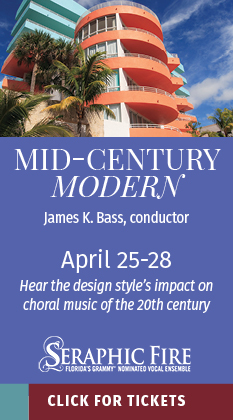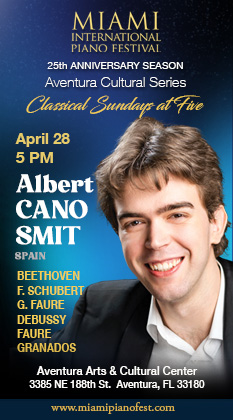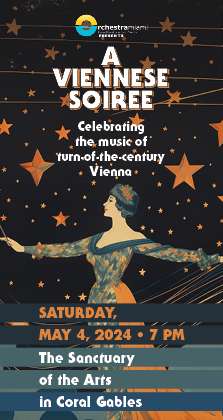New music for new times

Though the concert world is on hiatus because of the COVID-19 virus, musicians and composers are still making music.
And they are also making new music. Here are some recommended recordings of new and modernist classical music, all released in the last three months.
Brain on Fire. Hypercube (New Focus Recordings). Hypercube is a new ensemble comprised of saxophonist Erin Rogers, electric guitarist Jay Sorce, pianist and accordionist Andrea Lodge, and percussionist Christopher Graham. This is their debut recording, and all five pieces are heard in their recorded premieres. Four were written expressly for the ensemble, while the fifth, Sam Pluta’s American Tokyo Daydream IV (data structures / monoliths), was newly arranged for this album.
Hypercube’s instrumentation looks close to that of a jazz or rock group on paper, and there is a biting rock attitude to the music here, but the group and the composers stretch the orchestrations and timbres to their limits—this is a record that collects all sorts of unexpected and arresting sounds. It’s also at the leading edge of contemporary thinking and practice, the playing as sharp and precise as a scalpel, the music stabbing and exploding in all sorts of directions. It can all seem initially discontinuous until one feels the accumulation of musical ideas building organic, angular, muscular structures in the ears and mind. Dennis Sullivan’s opening under nails and Rogers’ own concluding Casino (Remix) make for a bracing start and a witty conclusion that will have one quickly reaching to hit the PLAY button again.
Hans Thomalla: Bagatellen/Air/Noema. Spektral Quartet; Yukiko Sugawara and Tomoko Hemmi, pianists (Sideband Records). This album is the first release from the new Chicago- based label Sideband Records. Thomalla is one of the principles of Sideband, along with composer Chris Mercer, and their purpose is to focus on their hometown’s new music scene—one reason for featuring the excellent Spektral Quartet, who play Thomalla’s Bagatellen. Their playing shows off the composer’s virtues, a calm certainty and pithiness—his music speaks clearly, uses no more means than necessary (but is in no way spare), and has the feeling of natural breathing. The Bagatellen—only one of the nine longer than three minutes—rise and fall in these sympathetic performances, and have a charm and loveliness made powerful by their modesty. Spektral violinist Clara Lyon plays the solo Air with a thoughtful feeling, the music floating in a kind of tonal netherworld, wafting like the atmosphere rather than spinning like any formal structure, while the piano duo etude Noema, played by Yukiko Sugawara and Tomoko Hemmi, brings a sense of sonic weight and emotional complexity to the end of the record. A polished and impressive debut for the label, this is also a notable advertisement for the quality of composing and playing happening in Chicago.
Glass: Music in Eight Parts. Philip Glass Ensemble (Orange Mountain Music). Music in Eight Parts is a 1970 composition that until last month had been lost; after a handful of performances, it was unheard for 50 years, and the score itself had vanished until rediscovered at Christie’s Auction House in 2017. An assistant at Glass’ music publishing house arranged the score for the current Philip Glass Ensemble, which was to premiere this new/old work at European concerts this spring. With concert life shutdown, keyboardist Michael Riesman produced this recording, with each part played and tracked from the individual musicians’ homes.
This is far more than a curiosity. It’s vintage Glass from his hardcore minimalist period, beginning with utter simplicity, then adding notes and ideas until the music moves along like a freight train. Though the opening betrays the remote, multi-tracked nature of the recording, the music builds to the propulsive bounce and harmonic beauty that are trademarks of this vital period in the composer’s career. This is a digital only release available through Apple Music.
Charles Curtis: Performances & Recordings 1998-2018. Charles Curtis, cellist, et al (Saltern). This 30-year retrospective compilation of recordings made by cellist Charles Curtis offers a strong survey of his career as well as the tonal modernism and avant-garde in classical music from the mid-20th century on. Curtis’ range on these three discs goes from touchstones like Morton Feldman (Durations II) and Anton Webern (Drei Kleine Stücke, Op. 11) to near-forgotten composers Richard Maxfield and Terry Jennings, all the way up to Éliane Radique’s 2012 composition Occam V, recorded live in 2013 at ISSUE Project Room.
Serving as foundation and bookends, respectively, are pieces from Machaut, Tobias Hume, Silvestro di Ganassi and Curtis himself, including the minimalist rock instrumental Music for Awhile. Curtis’ musicianship makes the new and ancient easy companions. The immersive quality of the selections is all the more impressive without anything from Alvin Lucier, for whom the cellist is an important interpreter. Stringing this all together is Curtis’ sinewy, grainy tone, ease of phrasing, and focussd clarity. Though the recordings come from different decades, the quality is uniformly high throughout.
Trapani/Ives/Dvořák (Live). Junction Trio (Self-Released). The Junction Trio is a newish all-star group comprising violinist Stefan Jackiw, cellist Jay Campbell, and pianist/composer Conrad Tao. This release combines live performances recorded from 2018 and 2019. The playing is excellent throughout, technically superior and also vibrant and responsive, the musicians in the moment with each other and the audiences. Though from different eras, the well-made program builds momentum with the linear accumulation of excitement as if the listener were there.
The delicate, enigmatic slides of Christopher Trapani’s Passing Through and Staying Put open up a sense of memory, to which Ives’ Piano Trio adds mystic chords. This is warm, natural Ives playing, without underlining or indulging in eccentricities, phrases and form flowing with ease. The preceding pieces make the consonance of Dvořák’s lyrical Piano Trio No. 3, Op. 65 not just satisfying but thrilling; the rhythmic feeling, and balances between pulse, meter and tempo are a revelation in this music. Digital only, available at https://jcttrio.bandcamp.com, all proceeds are split between Freedom Arts Movement and NYC Shut It Down.
Fromm Music Foundation Twentieth Century Composers Series (Sony). From the late 1950s to early 1960s, Columbia Masterworks released a series of LPs in their Twentieth Century Composers Series. Now, with the support of Harvard University’s Fromm Music Foundation, Sony has put together this 10-CD reissue of the original series. Remastered from the surviving 2- and 3-track analog tapes, the collection includes some of the most important names in 20th-century classical music—Luigi Dallapicolla, Elliott Carter, Ernst Krenek, Aaron Copland—as well as fine composers who have not had the same prominence, figures like Leon Kirchner, Benjamin Lees, and Ben Weber.
There are classic recordings of the LP era scattered throughout, including the Juilliard String Quartet playing Lees’ String Quartet No. 1 and William Denny’s String Quartet No. 2, and the first recording of Lou Harrison’s Mass for Mixed Chorus, Trumpet, Harp and Strings. Highlights also include soprano Bethany Beardslee singing Krenek’s Sestina for Voice and Instrumental Ensemble and Lamentatio Jeremiae Prophetae, Charles Rosen and Ralph Kirkpatrick in Carter’s Double Concerto, and Leon Fleisher playing piano pieces by Copland, Kirchner, Roger Sessions, and Ned Rorem. This is an important and scintillating chunk of musical history and a fine value as well.
Nocturne (Live at the Huddersfield Contemporary Music Festival). Irmin Schmidt, pianist (Mute). Composer Irmin Schmidt is best known as one of the founders of the extraordinary experimental rock band, Can. That group was steeped in the post-WWII revolutions in classical and jazz, and Schmidt himself studied with both Stockhausen and Ligeti.
In this concert recording, Schmidt plays three of his own works for a partially prepared piano (a technique he learned directly from John Cage) accompanied by pre-recorded audio. The context of mid-20th century avant-garde is here in the eerie piano timbres and the shadowy form and structure of Schmidt’s composing, while the audio sounds bring in the current cutting-edge context of field recordings; birds, public spaces, planes crossing the sky.
Schmidt leaves generous open spaces in the piano part, and with the audio this has the effect of opening up the listening experience step by step, until the music seems to demolish the walls of the room and even the concert hall in which this performance was captured. Gliding cloud-like between tonality, dissonance, and atonality, the music carves what seems a liturgical pause out of the flow of daily time, cemented by the sound of church bells—they ring the offering and the benediction on this lovely recording. https://mute.ffm.to/is-noc
Alvin Lucier: String Noise. Conrad Harris, violinist; Pauline Kim Harris, violinist (Black Truffle). The aforementioned Alvin Lucier is still making music that, in the way it explores the basic means of making sound, is as fresh and vital as ever. The centerpiece of this new release is Love Song, created expressly for String Noise, the violin duo of husband and wife Conrad Harris and Pauline Kim Harris.
For this piece, the two violins are connected by a long wire attached to each instrument’s bridge, and the musicians play only on the open E string, while circling each other at a distance—as each one plays, the sound crosses the wire and vibrates the other’s violin, creating more sounds. This is a remarkable piece to witness and what is unexpected about this record is how involving and beautiful it is as pure music, sans the visual and social drama of a live performance.
Filling out this double-CD set are a solo performance of Tapper, which has the player tapping the body of the violin with the end of the bow as they move around the space, creating an acoustic map of their location, and a duo performance of Halo, which combines the virtues of the other two pieces; the two players walk through the space in a zigzag pattern, playing long tones, the sound shifting along with the dimensions and angles of the room. The recordings are superb, the dimensional and geographical features of the music are realized through stereo speakers, and the discipline of Lucier’s thinking and String Noise’s playing produces a rich beauty that is full of subtle details.
Posted in Performances
Leave a Comment
Thu Jun 25, 2020
at 2:48 pm
No Comments






